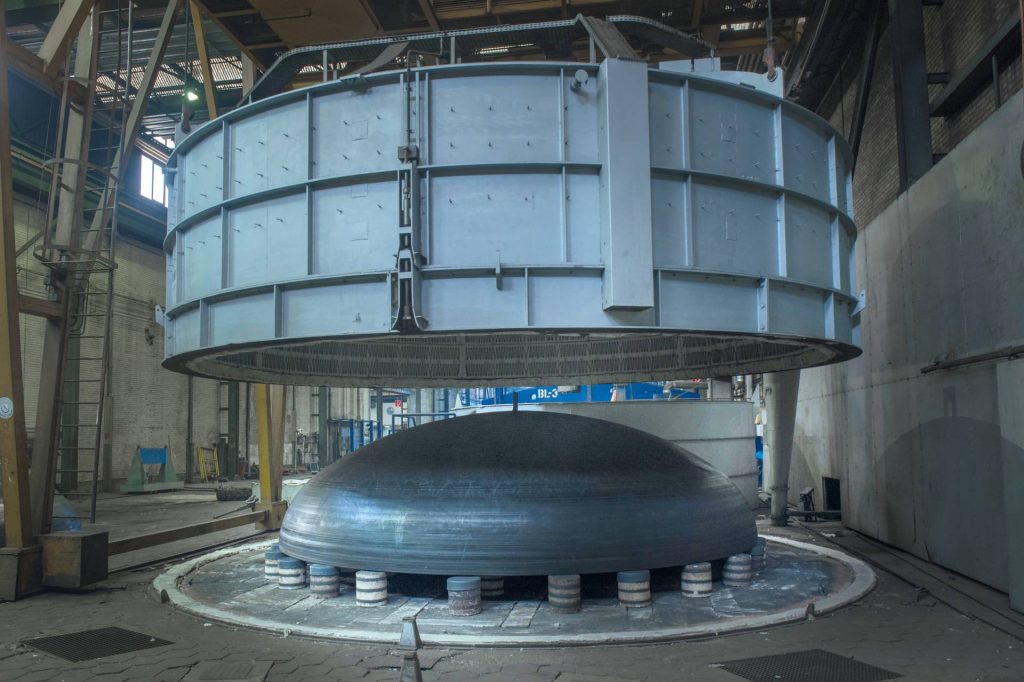Pressure vessel design codes: from ASME to EN 13445 vessel heads

What consequences does the selected design code have for the cost price of your product? From the Nederlandse Stoomwezen to ASME or EN 13445, what is the difference between the different design codes for pressure vessels? We discuss commonly used design codes, how these are chosen and what the consequences are. Finally, we look to new applications, such as the storage of new mediums. How are design codes used if not all consequences in terms of production and use can be foreseen?
A design code prescribes how a pressure vessel, or in our case the bottoms of that pressure vessel, should be built. For example, if we produce an elliptical vesselhead of material X and with a deformation of more than 5%, ASME prescribes heat treatment. And if an X-ray examination is subsequently carried out, this must comply with A, B and C. For us this means that it’s always crystal clear what the specification prescribes and are subsequently able to deliver a product that is 100% in accordance with the selected design code.
But what design codes are there? Common design codes are:
- ASME Boiler & Pressure Vessel Code – United States
- EN 13.445, European norm
- PD 5500:2021 – United Kingdom
- CODAP – France
- AD 2000 Merkblatt – Germany
- Richtlijn Drukapparatuur/PED 2014,68/EU – Netherlands
Pressure vessel design codes history: from ASME to EN 13445
In many areas, the ASME design code was the most common design code until the 1950s. This changed due to the increasing demand for methods for manufacturing lighter and therefore more economical pressure vessels. Companies from the oil industry were also looking for a way to provide drilling platforms and ships with lighter pressure vessels. ASME only had limited space for this, although the code was later expanded for this purpose.
This resulted in a British PD 5500 standard design on the earlier BS 1500 and BS 1515 standards, allowing for higher allowable stresses and more sophisticated rules. In May 2002, the European Union presented an EN 13445 Unfired Pressure Vessels standard. Both codes are better suited to the design of lighter and more efficient vessels.
Today, ASME and EN 13445 are the main design codes for new pressure vessels. American orders and order from oil and gas companies are in 99% of cases built to ASME, while the chemical industry, for example, more often chooses EN 13445. But that does not apply to the replacement of old pressure vessels and installations.
Replacement of existing pressure vessels under old design codes
The standardization of what used to be, and in some cases still is, national codes and standards means that these are all still relevant in our world. Knowledge of the design codes as laid down in the Dutch Steam Act is, for example, essential if we are working on replacing existing pressure vessels in our ports. Of course, the fact that the implementation of this law/directive has been privatized since 1994 does not change the specifications and requirements of existing situations!
Download: Renewable energy and carbon capture
Using our experience in tanks for the transition to renewable energy in carbon capture and storage.Determining design code for pressure vessel
As a manufacturer of only vessel heads – Antonius usually works for manufacturers of pressure vessels – our customer’s customer ultimately determines the design code and specifications. The process technologist uses specialized software for the design of the plant, installation, pressure vessel or pipeline and this already produces a number of important values for us. The engineer takes into account things such as:
- Environmental factors (such as corrosion)
- Temperature
- Pressure or pressure gradient
- Medium
Often the rest of the installation determines the design code under which a pressure vessel is built as the customer wants to keep it the same. But sometimes it is attractive to choose a different design code because thinner material can then be used or a number of time-consuming elements can be released. So economic factors are also taken into account when determining which design code is to be followed:
“In practice, it also regularly happens that customers calculate their design in, for example, ASME and EN 13445. Often a different material or material thickness is calculated and the customer can make a choice based on that outcome. We then receive a clear assignment to build the vesselhead according to ASME, for example.” – Marco Hamersma, Sales Engineer Antonius
Design codes for new mediums or applications
‘Which material are we choosing?’ On several fronts, Antonius sees that the choice of material is no longer a logical result from a design code. When storing a new medium and especially when it comes to completely new applications, it is often still unclear what the long and short term consequences of certain choices are. If the choice of a material means that the entire pressure vessel still has to be heat treated after welding, the customer must be prepared for this or include these costs. This often means that it is better to make a different material choice.
“It is crucial, especially when developing new applications, that the consequences for the entire production chain are taken into account when choosing a specific design code or material. Especially with large dimensions, you prevent that, for example, much more labor or a significant risk of damage is created in the last phases of the production chain. We are happy to advise our customers about this.” – Rob Derix, Commercial Director Antonius
Antonius produces vessel heads in accordance with all the design codes mentioned in this document and regularly helps customers make the right decisions for their situation. By already involving our Sales Engineers during the design phase, we advise our customers about the consequences of certain choices on production costs, delivery times and even use of materials. Our practical knowledge and experience is often a welcome addition to the expertise of your own engineering department.